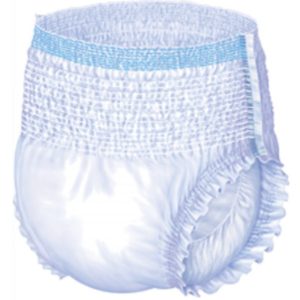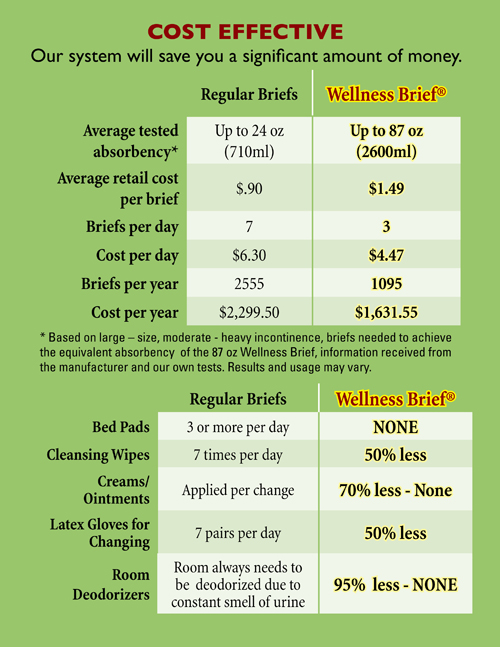An overactive bladder is easily confused with urinary incontinence. Both conditions may require the victim to use adult pull-ups, but there is a world of difference between them. A more in-depth look at each of the conditions will help you understand where they differ and areas where there are similarities.
What is an Overactive Bladder?
Overactive bladder is a condition where the victim feels the urge to pass urine often even when the bladder is not yet full. Involuntary passing of urine or the urge is caused by the contraction of detrusor muscles, found in the wall of the urinary bladder. The urge to pass urine is usually sudden and sometimes uncontrollable.
Symptoms of an Overactive Bladder
It is worth noting that each person displays specific symptoms and a different level of over-activity. However, there are common symptoms that will be useful when making a preliminary diagnosis. They include-
- Frequent Urge to Urinate – an average person will urinate at reasonable intervals of time, based on his or her level of liquid intake. If you find yourself urinating more than 8 times a day, there is likely to be a problem, and you need a check-up. The frequency reduces at night. You should not exceed two times during a night, or in other words, not more than twice during 6 – 8 hours of sleep. A persistent change to the frequency of your previous routine can be a sign that something is not right.
- Urgency to Urinate – a frequent and sudden urge to urinate. When the urge strikes, you find yourself unable to control or stop the passing of urine. Failure to visit the toilet results in wetting or incontinence. Once you get to the toilet, you realize that the volume of urine is unreasonably small. Do not confuse this urgency with an instance where you have stayed long without passing urine. The bladder will push you to the toilet where you will pass reasonably high quantities.
- Wetting Accidents – wetting is also termed as urge incontinence. This is an involuntary loss of control after feeling an urge to pass urine. It is mostly sudden and unstoppable, and can cause you to pass small quantities of urine before you can even move a step. It results in wet underpants even before you get to the toilet. This can be embarrassing and may cause victims to isolate themselves from other people.
Most people who suffer with an overactive bladder only experience the problem of frequency and urgency. Wetting accidents are only common in a third of people with an overactive bladder. Their condition is severe because it is a combination of frequency, urge and wetting accidents.
The person experiencing an overactive bladder requires visiting a specialist to get a proper diagnosis. Some causes are treatable to reduce the severity. It is during a visit to the urologist that the specific cause is isolated. Some of the causes of an overactive bladder include
- Neurological disorders such as multiple sclerosis and stroke
- Medication that causes you to pass a lot of urine
- Diabetes
- Bladder abnormalities like stones or tumors
- Acute urinary tract infections
- Any health condition that obstructs flow of urine to or from the bladder – this includes constipation, enlarged
- prostrates and treatments that could have targeted other forms of incontinence
- Excessive consumption of alcohol or caffeine
- Degradation in cognitive ability as a result of aging or brain-related medical conditions
Some complications that cause over activity of the bladder are manageable. Over activity or incontinence is emotionally distressing and may lead to depression. The victim becomes anxious since he or she is not sure about when the urge will come, or whether it will be possible for them to get to the toilet in time. The anxiety can disturb sleep cycles, leaving the sufferer with an inability to sleep well. Such disturbance may even lead to nightmares. The sexual life of such a person will also be affected.
Many of the causes are easy to treat. A specialist urologist will recommend a series of treatment or management procedures based on your condition and severity. However, prevention is the best cure. Quit smoking and consuming alcohol if your bladder overreacts. Maintain a healthy weight and exercise regularly. Take steps to manage chronic conditions like diabetes to prevent over activity.
What is Urinary Incontinence?
Urinary incontinence is an involuntary passing of urine, though it must not be a medical condition. Different people display particular symptoms based on the causes of their incontinence. However, you can distinguish between different types of incontinence by addressing their causes.
Urge Incontinence
Urge incontinence is described in similar terms as an overactive bladder. It results from the involuntary contraction of the detrusor muscles. Beyond wetting accidents, urge incontinence causes enuresis or leakage while you sleep. If the cause is treated, this problem will disappear.
Stress Incontinence
Stress incontinence because of the weakening of muscles around the urethra, causing urine to escape from the bladder. The stress comes from abdominal pressure. Some of the pressure is minute and results from normal body activities like coughing and sneezing. A hearty laugh or even exercise may also lead to stress incontinence.
Stress incontinence is more common in women than in men. Most victims experience the problem due to aging, menopause and childbirth. Stress incontinence because of delivery will eventually disappear as pelvic floor muscles heal and regain their strength. Pelvic muscle exercises help the process along. Incontinence due to menopause and aging can only be managed.
Overflow Incontinence
Overflow incontinence arises from a bladder that never empties. You experience slow leakage where you do not feel the urge to go to the toilet. It occurs in both men and women, and is the result of an underactive bladder. Diabetes and cardiovascular diseases aggravate the problem. Nerve damage from injuries and other health conditions will make overflow incontinence worse.
A Mixed Case of Incontinence and Overactive Bladder
Urinary incontinence and overactive bladder cause an involuntary passing of urine. It, therefore, becomes difficult to distinguish between the two unless an expert urologist does extensive analysis. The good news is that both conditions
are manageable using adult pull-ups and adult diapers.




